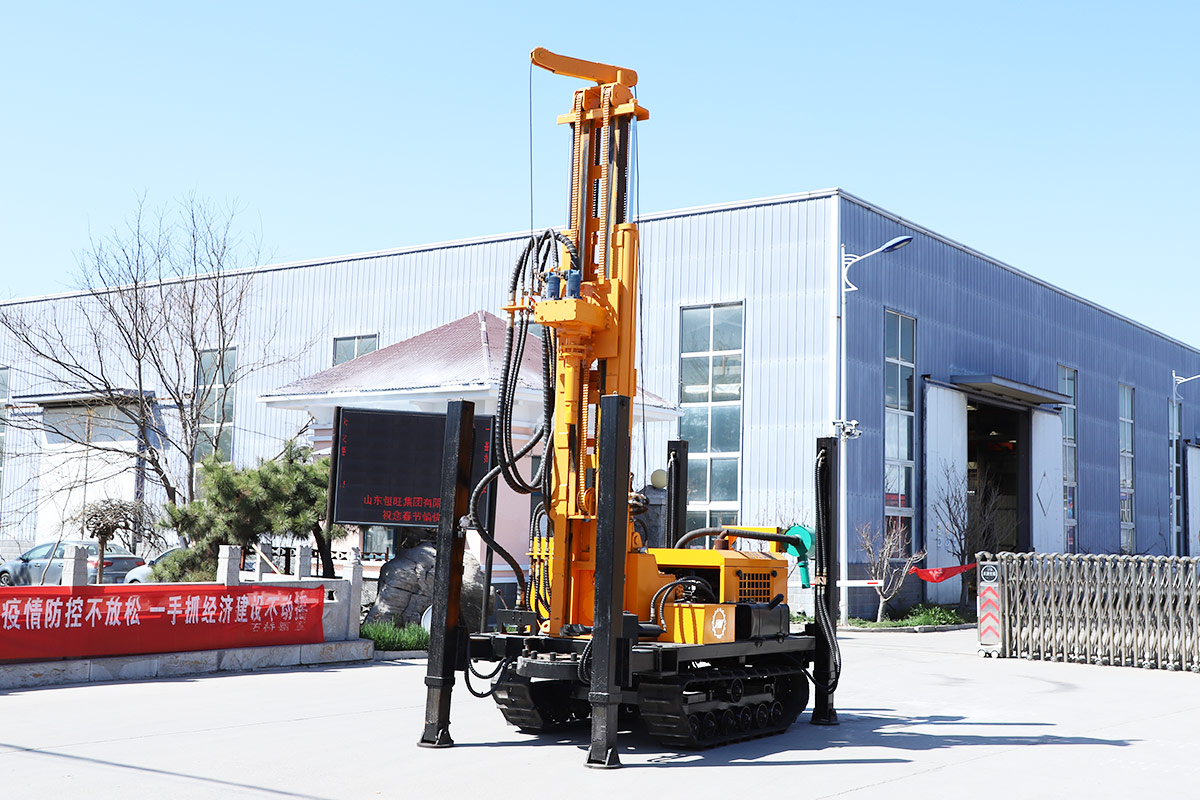Date: Mar 08, 2023 Views:

A water well drilling rig is a large machine that is generally used for drilling operations on construction sites or drilling water wells. It is also used by some large enterprises, such as oil, gas, ore and other projects. Drilling through a machine is handy for us to get oil, minerals, etc. We usually install two huge columns on both sides, which must be fixed firmly. Since the rig is in the middle, the rig generates a huge amount of power during operation. If it is not fixed securely, it may cause stoppage of operation or other dangerous accidents. Once installed we also needed to run a very thick pipe to the rig and a sump to drain the sludge. When working, at atmospheric pressure, circulating fluid goes deep downhole to keep the drill bit rotating and moving forward. The circulating liquid then brings out the sludge inside. After settling for a period of time, the circulating liquid is circulated according to the previous method.
Rotary drilling rigs can be divided into rotary table drilling rigs, power heads and downhole power drilling rigs according to the power transmission method. The rotary table drilling rig is equipped with a rotary table at the wellhead of the drilling floor. There is a square hole in the middle part of the turntable. The kelly at the upper end of the drill string passes through the square hole. The kelly is connected to the drill string and bit. When the turntable is driven by power, the drill string and drill bit rotate together to achieve the purpose of breaking rock. Powerhead rigs are hydraulically powered from the top, driving a rotating rod that drives the drill bit to break rock. The downhole dynamic drilling rig uses the downhole dynamic drilling tool to drive the drill bit to break the rock. The drill string does not rotate during the drilling process, so the equipment wears less and has a long service life. It is especially suitable for directional drilling, which is divided into turbo drill, auger drill and electric drill.
Water well drilling rigs mainly rely on the rotary motion of the drilling tool to break rocks and form holes. The common ones are large and small tank cone drilling rigs, forward and reverse circulation rotary drilling rigs, hydraulic power head drilling rigs, down-the-hole hammer vibration rotary drilling rigs, etc. A simple rotary drilling rig only has a drilling device, while a well-structured rotary drilling rig consists of a drilling device and a circulating well washing device. The drilling tools of the rotary drilling rig include drill pipes and drill bits. The nominal diameters of commonly used drill pipes are 60, 73, 76, 89, 102 and 114 mm respectively. There are two types of drills: full drills and ring drills.
The rotary drilling rig drives the drilling tool to rotate through the rotary mechanism (power head). The drill bit installed at the end of the drilling tool cuts the soil and drills the hole, adopts wet slag discharge, uses a high-pressure water pump to inject the flushing medium (water and drilling flushing fluid) into the drilling rig at a certain flow rate and pressure, and uses the positive circulation process to discharge the slag in the hole And the soil is discharged, forming a hole. At present, in water well construction, three commonly used construction methods are cemented carbide drill bit drilling, steel particle bit drilling and roller cone bit drilling techniques.
The working process of the water well drilling rig is inseparable from the use of the pump, which is used for reverse circulation operations. Under the action of atmospheric pressure, the circulating fluid flows from the sedimentation tank to the bottom of the well through the return ditch along the borehole annulus. At this time, the turntable drives the drill pipe and drives the drill bit to rotate and drill the hole. The negative pressure formed by the suction of the mud pump sucks the debris mud into the inner cavity of the drill pipe, then rises to the faucet, and is discharged into the sedimentation tank through the mud pump. The precipitated circulating fluid continues to flow into the wellbore, and the wellbore continues to circulate, forming a reverse circulation drilling operation. Mud or water enters through the drill pipe and exits the wellhead. This is a positive circulation drill. Mud or water is drawn from the drill pipe and flows in from the wellhead. This is a reverse circulation drill.